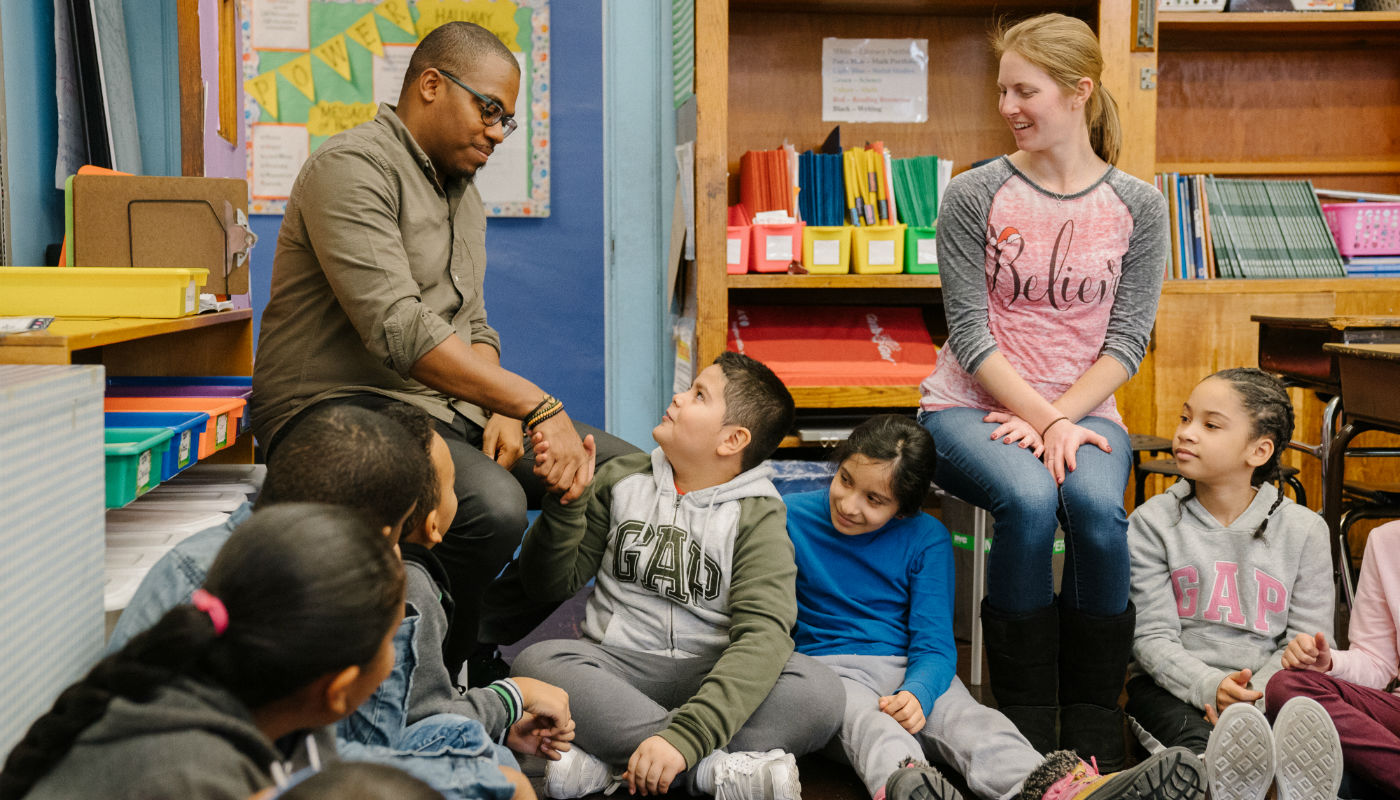
When Shawn Carter was in the 6th grade, something happened that changed his life. He had a teacher who saw him. I mean really saw him. Ms. Lowden noticed that every time she challenged her students to learn a new word, Shawn came alive.
“What does a loquacious person like to do?” she asked the class. Shawn dug into his dictionary to find the answer. Ms. Lowden noticed.
She urged him to keep digging for new words and told him he was smart. The sad, quiet boy, whose father had recently left his family, began to come out of his shell. Today, Shawn Carter, better known as the rapper Jay-Z, credits Ms. Lowden with his love of language and with encouraging him to find the words to share his unique voice with the world.
‘I See Who You Can Be’
Think for a moment about a relationship you have had with a teacher who made a positive difference in your life. What ingredients made that relationship so powerful? Researchers have investigated relationships in depth and this is the gist of what they found: positive developmental relationships are characterized by attunement, warmth, consistency, co-regulation, and an adult’s ability to perceive accurately and respond to a child’s internal state.
In other words, positive relationships are not just about being nice to a student. They’re about building trust. They signal, “I see who you can be.”
Overcoming Adversity
Positive relationships can be key to overcoming adversity. Adversity and stress are everywhere, and they can have harmful effects on a child’s health, learning, and behavior. But if someone that child trusts steps in to buffer the stress, this provides protection from the most harmful effects of ongoing adversity.
The Science of Positive Relationships
There is science behind that. Positive relationships produce a biological response, the release of the hormone oxytocin. Known as the love hormone, oxytocin opposes the effects of the stress hormone, cortisol, and opens the brain to new experiences and to learning. So, when you develop a positive relationship with a student, you are helping to develop a learner.
Brain Fuel
You are also becoming a brain builder. By that I mean that positive, trusting relationships are healing and they are fuel for healthy brain development. They provide the crucial scaffolding necessary for children to embrace new challenges as they develop more and increasingly complex skills over time.
Recently, some colleagues and I synthesized research from multiple scientific disciplines on what can be done to help all children develop and learn in healthy ways. I hope you will read what we found in two papers published in the journal Applied Development Science, but for now, three of the most important insights are:
- The brain is plastic or malleable into young adulthood – neural connections grow and strengthen in amazing ways as children interact with the world around them.
- Relationships and environments shape the developing brain for good or for bad.
- Classrooms designed to promote integrated growth and development will support the fullest expression of each child’s potential.
What Teachers Can Do
What this means for teachers is that when they build a classroom that is safe and calm, filled with trusting, supportive relationships and opportunities for challenge and growth, they are laying the foundation for every child to reach their full potential as human beings. That’s powerful stuff.
2 x 10 Strategy
Now, how can you begin to do that, especially with your most challenging students? Here’s one tried and true strategy: it’s called 2 x 10. Think of a student in your class whom you have difficulty connecting with. Set aside two minutes a day for the next 10 school days for one-on-one time with that child. During the two minutes, talk about anything the student wants to talk about. Find out what she or he likes to do outside of school, a favorite food, movie, book, holiday, sport, or super hero. Note even microscopic indicators of a child’s special gifts, accomplishments, or curiosity. Over the course of 10 days, you will begin to establish a connection, an understanding of who that child is that is the basis of a positive developmental relationship.
When you do connect with a student, when you really see that child much the way Ms. Lowden saw a 6th-grade Jay-Z, you are unleashing your own super power, the power to heal, the power to be a brain builder.
Mentoring is an integral part of Summit Learning student success and building positive relationships. To learn more about 1:1 Mentorship, explore more mentoring stories on The Summit Learning blog.

